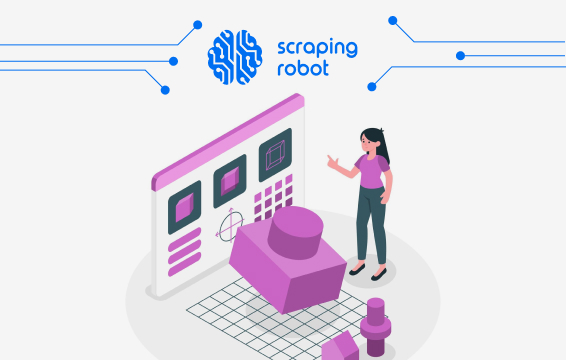Collecting Product Data For Product Analysis With Web Scraping

If there is one thing I don’t like about buying products online, it is having to spend so much time comparing prices and features. I often want to buy the first item I see (I’m sure I’m not alone in this), but my girlfriend might just send me out for not being thrifty enough. So I have to spend time comparing different products to determine the best in quality and price. If you sell a product or service, it’s important to pay attention to the habits of your consumers when they’re deciding to buy. As a business owner, the need to compare products before creating, marketing, or selling your products is even more imperative, especially if you are in a niche with highly competitive products. There are a hundred sellers with a better product and a hundred with worse products for every product you have. To avoid joining the league of sellers with inferior products and successfully advance into the ranks of those with great products, you have to continually analyze both groups to know what you should and shouldn’t do. In other words, you need to make product analysis a top priority.
Product analysis involves examining product features, costs, availability, quality, appearance, and other aspects of a product in an attempt to understand a product and its interaction with the market properly. In simple English, analyzing a product is how you determine what the product does, how it does it, and if consumers think that it is worth the price they’re paying for it.
In this article, we’ll explain why you need to conduct product analysis, the different categories of analysis you can conduct, and how to use web scraping to obtain product data for your analysis project. Feel free to use the table of contents to skip to the section the most interests you.
Table of Contents
Why You Need to Undertake Product Analysis

From the product analysis definition we gave above, it is easy to see that there are several critical reasons why you need to analyze your product and those of your competitors. By analyzing products, you can explore one product’s quality or functionality versus another or determine if a product’s function matches your brand’s message. You can also implement or improve a product design, cut the costs of building your product, assess market receptiveness to a particular type of product, monitor a product competitor, and more.
Product analysis is the product-focused version of market research or competitor analysis. Instead of focusing on consumer trends or competitor tactics, product analysis focuses on product quality, functionality, and cost-effectiveness. It is like conducting market research for product development. The advantage of doing a product analysis over other forms of research is that it also tells you everything you need to know about consumer trends, market trends, competitor activities, etc.
Using Web Scraped Product Data for Product Value Analysis

Let me describe a scenario. You want to buy something, and you decide to search for it online. When you search for it, you’re excited by the number of different versions of the product. (That guy Google just loves to show off). But when you start going through the pages, you start getting tired after a few pages. Eventually, you just go back to the original option you searched for and buy that one, wondering why you didn’t just buy it from the start as you originally planned. I’m sure I’m not the only one who has experienced this scenario. What you experienced is called data overload. The amount of data you were trying to process was too much, so you just reverted to your original option.
Now, if that happens with just a few pages of products where you were probably only comparing prices, imagine what would happen when you try to conduct analyze products at an industrial scale with different metrics involved. The amount of product data available on the internet is mind-boggling. And more data is being generated every day. As we said earlier, for every product you have, hundreds, maybe thousands of people are selling something similar and generating immense amounts of product data. Collecting and analyzing this data efficiently requires a specialized data collection method. There are several data collection methods available, but the most efficient is web scraping.
Web scraping for product analysis
So what is web scraping? Web scraping uses bots called crawlers to parse through the source code of a particular webpage and extract data according to some preset parameters. Web scraping allows you to go through hundreds, even thousands of webpages in a short time, extracting data in large volumes.
With web scraping, you can automate a critical part of your process; collecting product data. Web scraping allows you to go through hundreds of product listings, scrape competitor websites, industry forums, and any other product data source for all the information you need to carry out a product analysis efficiently.
The data scraped is collated and delivered to you in an easy-to-use format, like an Excel or CSV file. This makes it very easy to integrate the data into your analysis process. It also helps you centralize your data collection process. Instead of waiting for manual delivery of data from different employees or collecting the data in bits and pieces by yourself, web scraping makes it easy for you to collect all the product data you need in the same place, at the same time. Once you have the data, half your work is done, and you can concentrate on analyzing the data for information to use in improving your product or making an informed purchase. There are several ways you can use the product data scraped to conduct product analysis. Let’s take a look at some of them.
Different Ways To Use Product Data for Market Research for New Products

Several different aspects of a product need to be examined to develop an overall picture of how excellent or otherwise a product is. With web scraping, you can collect data on any aspect of a product you wish to analyze. Here are a few examples of the types of analysis you can scrape data for:
- Product cost analysis: You can scrape a product’s market data, price comparisons, and cost of materials to see if it is cost-effective while meeting consumer requirements. Product cost analysis lets you know if and where you can cut costs in building your product. Scraping data for cost analysis also makes it easy for you to create a competitive pricing strategy for your product.
- Product value analysis: A product value analysis tells you how valuable a product is in the market. By scraping data on the consumer preference rate, the market share, and luxury value and comparing it with similar products, you can determine just how much power a product has on the market.
- Product performance analysis: A product performance analysis tells you how effective a product is in performing the function it was designed for. You can scrape data such as retail data, consumer reports to perform a product performance analysis.
- Product quality analysis: A product quality analysis examines the ingredients and material make-up of a product and compares it with industry standards and competitor materials to determine if the product is below, up-to, or above the minimum accepted quality standard.
- Brand compatibility analysis: A brand compatibility analysis is an analysis you conduct before building a product to determine if the proposed product fits your brand image. Creating a product that deviates from your brand message can negatively impact your business, so this is an essential type of product analysis if you are a business owner.
These are a few of the most common examples of product analysis. Some others are compatibility, durability, risk, and efficiency analyses. All of these forms of analysis come together to show you if a product is superior or inferior. Using web scraping, you can easily and efficiently collect the data you need to carry out whichever type of analysis you need to do.
Utilizing Scraping Robot as a Tool for Carrying Out Market Research for Product Development

Suppose you are looking for a web scraping service to help you obtain the data you need to collect product data and efficiently analyze any product. In that case, Scraping Robot is what you need.
With Scraping Robot, you can scrape any website or platform you want for data on your product and your product competitors. To start scraping this data at scale, just send us a message telling us what you want, and we’ll get started creating your custom scraping solution for you.
All our web scraping modules use APIs to enable you to automate your web scraping process and collect data in real-time. We also use multiple proxies, allowing you to send an unlimited number of scraping requests simultaneously. Want to learn more? Try it for yourself.
Final Thoughts
To efficiently carry out product analysis, build a complete picture of what a product is, what it does, how it does, and how efficient it is at doing it, you need data; loads of data. At Scraping Robot, we offer you a way to get all the product data you need at the lowest price you can think of. Send us a message right now to get started building your data scraping solution.
The information contained within this article, including information posted by official staff, guest-submitted material, message board postings, or other third-party material is presented solely for the purposes of education and furtherance of the knowledge of the reader. All trademarks used in this publication are hereby acknowledged as the property of their respective owners.
